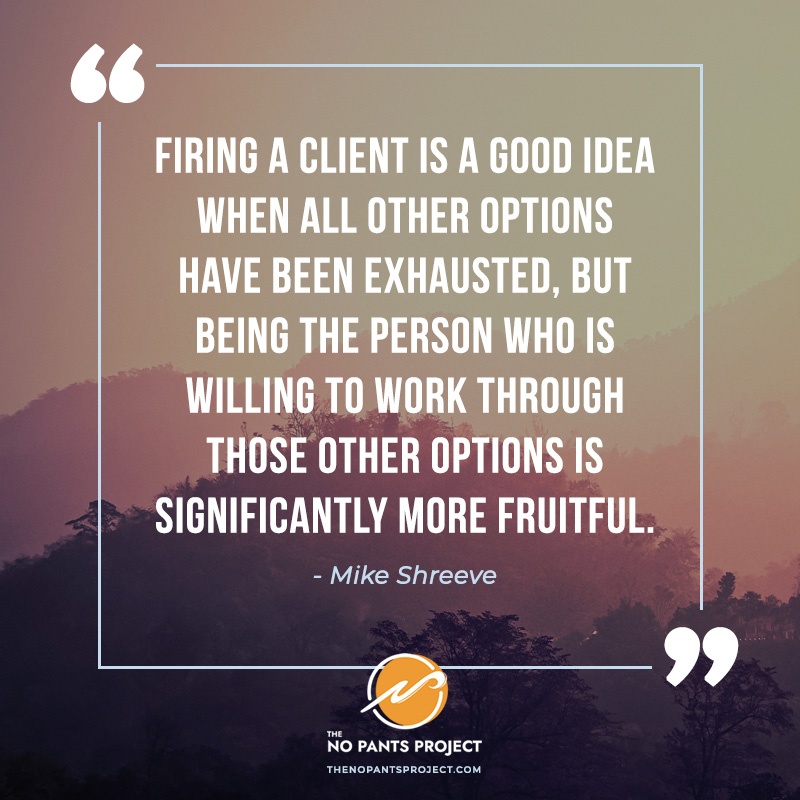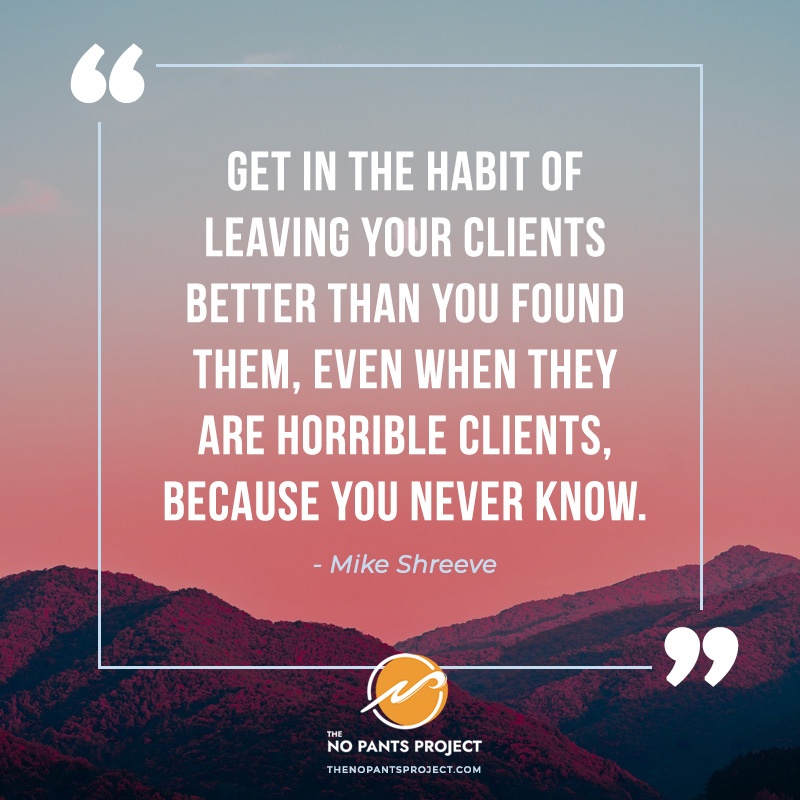Listen to this Podcast:
Listen on Anchor Listen on Spotify Listen on Apple Podcasts
SUMMARY
- Today we’re going to talk about the 5 signs that it’s time to fire your client. However, it’s important to understand that almost all client problems can be prevented through better communication. And they’re almost always avoidable if you’re willing to call up the client and have a collision conversation with them when things aren’t working for you anymore.
- Many service providers will just silently stew—and then all of a sudden they’ll pop and quit. A year ago, I would say that while this isn’t ideal behavior, your business wouldn’t be that affected by it.
- But now that we’re in the middle of the pandemic, I would say that people whose default response is to leave their clients in a lurch will begin to feel the effects of heavy attrition on their business in six months or so.
- So the caveat here is that what I’m about to tell you are signs, not the final straw. These are signs that a relationship needs to be fixed.
- Get in the habit of leaving your clients better than you found them, even when they are horrible clients. Every time I fire a client, I always try to leave them with a replacement or suggestion, because you never know. Be vigilant but wise. It’s not what it was a year ago, and I think it will be harder in a year from now.
- Sign #1: They don’t follow your recommendations but demand that you generate the same results.If you tell a client, “To get result XYZ, you need to do ABC,” and they respond with, “Fantastic, but I will only do A,” then you have to say, “Then I can only give you X.” If they still expect XYZ when they can only deliver A, it’s time to have those conversations. If the conversations don’t do anything, then it’s time to fire the client.
- Sign #2: Emotional Instability
This refers to the client’s inability to remain objective and professional about what you’re doing together. For example, a client who emails at 2 am because they had a random thought about something they were worrying about. - Recommended book: The Whole-Brain Child by Daniel Siegel and Tina Payne BrysonRunning a business through pure emotion makes getting results impossible, because emotion is a filter that gives inaccurate information. And you cannot make good decisions with inaccurate information.
- Sign #3: Keeping critical information from you that’s required for delivering results.
- Sign #4: The client is not level-appropriate or ready for you.
For example, a client hires you to produce content but they have nothing to sell. No matter how good you are at producing content, you won’t be able to deliver results for the client. This is one of those scenarios where you will be significantly better off if you can leave the client better than you found them. - Sign #5: Unrealistic Expectations
Expectations management when it comes to clients is really about ongoing conversation. And clients will naturally balloon expectations because they’re paying you money. Transactions are emotional, regardless of the amount. - You could just quit, but that wouldn’t help anybody. You would just affirm that behavior and repeat it in the future. What I recommend that you do is to always continue to manage your clients’ expectations. If you have a client who is willingly having unrealistic expectations, then that’s when it’s time to fire them.
- Again, I would recommend a little bit more gratitude that you have clients during this time. All of the issues mentioned are manageable and fixable, and firing the client is not the only option. Don’t get into the habit of burning bridges.
HOT NEWS & DEALS
- Free Training! How I Scaled To $100k/Month+
For anyone serious about scaling their service business, this training will cover the 4 Stages To 7-Figure Growth. Perfect for the coach, consultant, or freelancer stuck in a hamster wheel business who wants to grow and scale. - 15 Ways To Double Profits During Hard Economic Times Report
Need a few tips to help you through the hard times? Download this 40+ guide and I’ll show you what I do to help businesses thrive during even down turns. - Download ‘The Anti-Commodity Formula’ Workbook!
Learn how to attract your ideal clients and customers, charge more than your competition, and build a business from a home that you love.
INSPIRATIONAL QUOTES
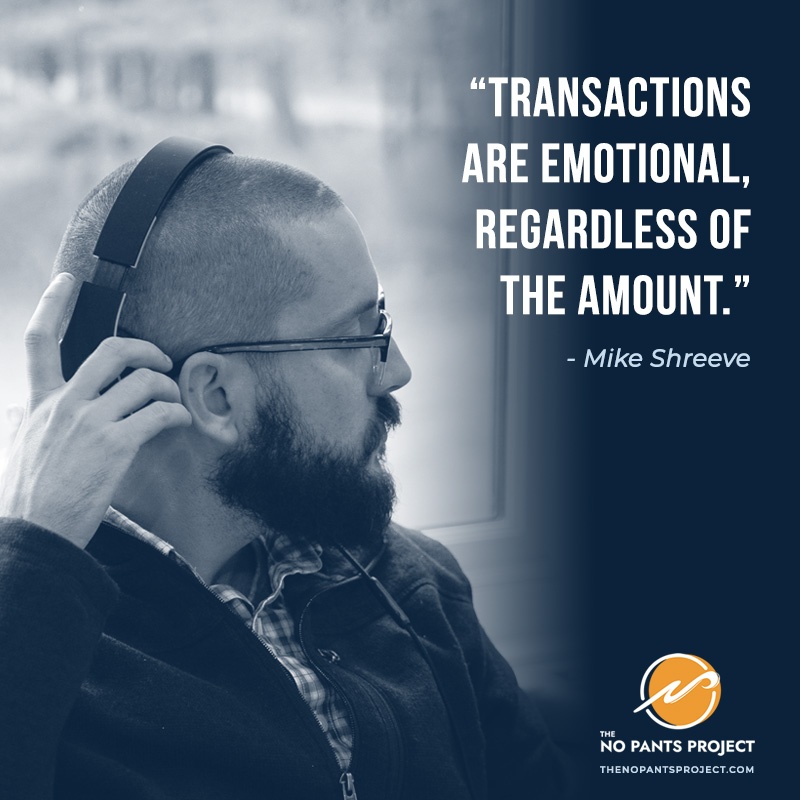
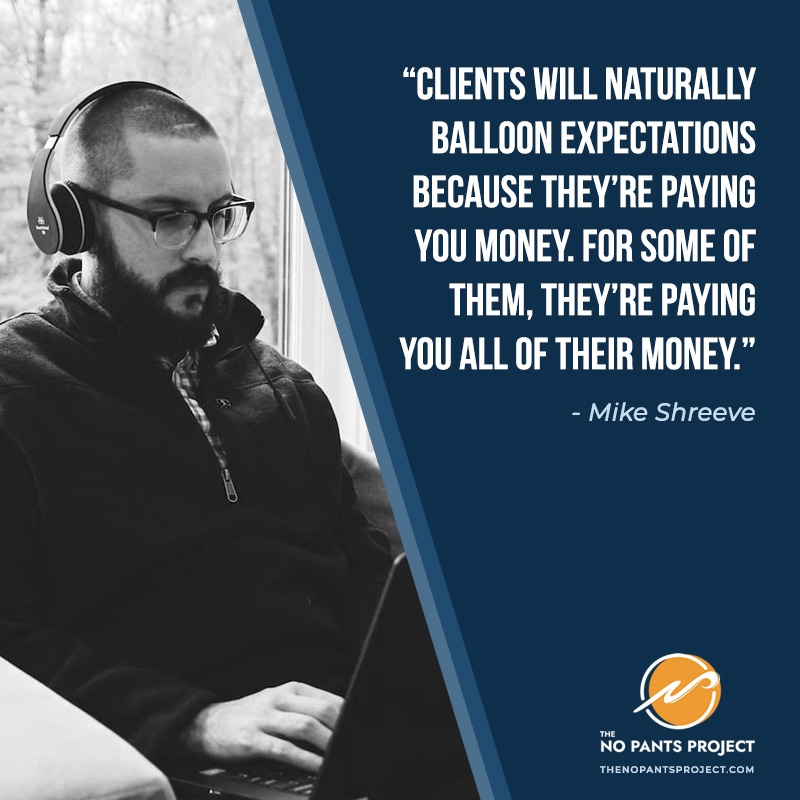
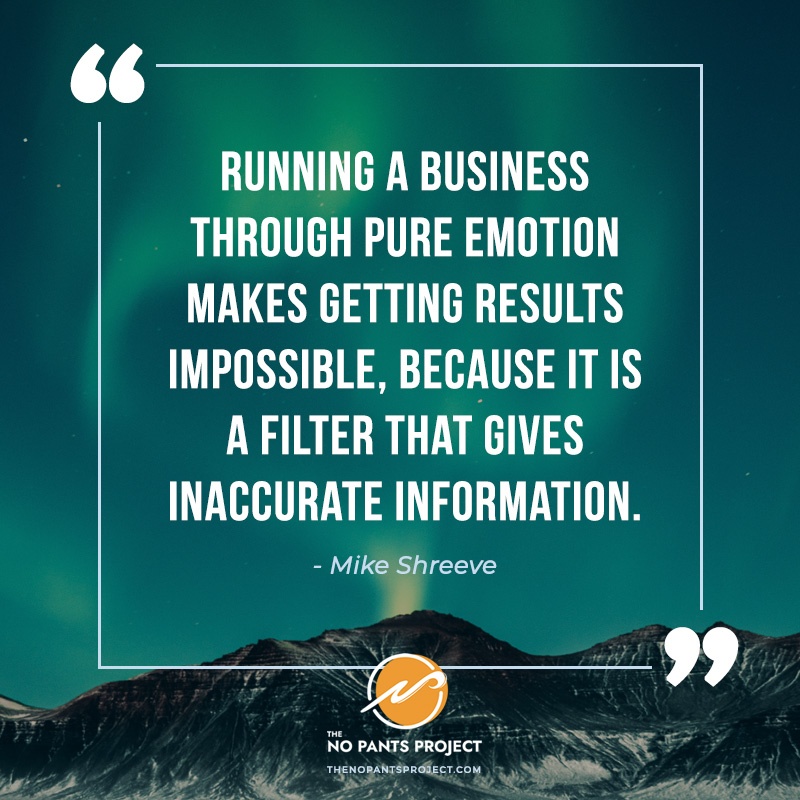
FULL TRANSCRIPT
How long have your friends hope you’re doing well. Welcome to this episode. We’re going to be talking about the five signs that it’s time to fire your client. This later this week, we’ll also talk about a couple of different signs that it’s time to fire people that you’ve hired so that you can get a good insight into both worlds. Um, sometimes it’s easy to be very self focused as a freelancer consultant, um, uh, coach, whatever it is that you do as a service for someone it’s easy to look at how it affects you and how you feel. Um, and sometimes that, uh, self-centeredness can, uh, prevent you from seeing the whole picture. So in a couple of days or next week or something, I’ll do that podcast as well to talk about what it’s like from the client’s perspective and why they may want to fire you so that you have a good understanding.
Now, why do we want to have this understanding? Well, I’ve been doing this for 12 years. I’ve worked with a ton of clients. I’ve probably have just run the range of amazing clients to absolutely horrible nightmare clients. And there’s a couple of things to understand. One, almost all client problems are preventable. They’re preventable through better communication. So you having the guts to be honest and open and transparent, uh, number two, they’re almost always avoidable. Uh, if you’re willing to have a collision conversation. So to be able to call up the client and say, Hey, this isn’t working for me. We need to have a conversation. A lot of people who serve clients will just silently get angry. And then all of a sudden they’ll pop and quit. And, you know, last year I would say, ah, that’s not a great behavior, but your business should be fine.
If you’re that kind of a person where you just silently suffer or even worse, you straight up lie to your client or your yeah. You, so you straight up lie to your client and you say, Oh yeah, everything’s fine. Everything’s fine. Everything’s fine. In secretly, you’re like working on your exit plan and you’re like, screw this guy. I’m just going to milk them for money. And then I’m out of here a year ago. I’d say, ah, you know, that’s fine. It’s not ideal. I think it’s pretty like personally. I think it’s a horrible thing to do as a person, but I think your business wouldn’t actually be that affected by it. Um, where we’re at currently in this episode is being recorded in the middle of the pandemic. We’re still in the first order consequences of the pandemic. Economically speaking, I would say the summer and maybe even the fall of next year is where we will start to see the knock on effects.
The second order consequences. And I would say, um, many service providers are woefully unprepared in their current behaviors of operating a business for what’s about to happen. Meaning if you are the kind of person who can’t have those coaching conversations and you sort of just secretly stew and then quit at the last minute or leave your clients and alert, or are too afraid to have the conversation to save the relationship and your, your default behavior is to quit. And you don’t. And when you quit, your default interpretation of quitting is that you sort of won or that you there, like you were able to eject yourself from the situation and you aren’t empathetic towards the fallout that occurs. Um, I would say in six months or so, you will begin to feel the effects of heavy attrition on your business. Okay. And if you don’t have a, um, if you don’t have a system for consistent client getting that is currently, uh, leaving you with more clients than you have time to fulfill on, then that, uh, that cycle of attrition based off of behavior, because the person who would do that kind of thing also has other correlated behavioral issues that lead to attrition issues in a business, right?
So the person who would do that also does other things in their own business, um, because it’s about value systems. It’s about, uh, prioritization. It’s about belief of what a client is and things like that. And eventually what’s gonna happen is, uh, in six months or a year as the second order, consequences really tighten up the market. Uh, you will find that that kind of behavior is really going to hurt you. So the caveat here is I’m going to give you a bunch of signs that I think you should be aware of, but understand that these are signs. They’re not, um, you know, they’re not the final straw. They’re not the once you see this happening, you must fire them immediately. Instead, these are the signs that things are headed towards the end of a relationship. And you can fix any relationship a year ago.
I would tell you don’t bother fixing the relationship, move on now with what I’m seeing, uh, across multiple clients, what I’m seeing, uh, across my friends companies, um, what we’re seeing just in the world in general, I would tell you, instead of focusing on firing the client focus first on trying to mend the relationship, um, and at the very least get in the habit of leaving your clients better than you found them, even when they are horrible clients. Okay. Um, as a general rule, I would say in the 12 years that I’ve run my business, I have only once left a client, uh, in the lurch. Um, and that was actually because of very serious family, personal issues. Um, I, there was nothing I could do otherwise every single time that I’ve fired a client, okay, not quit a client, but like, this is it.
I cannot work with you anymore. I’m going to fire you. I always try to leave that client with a replacement, a suggestion, um, and not just a suggestion of like, here’s my email, I’m quitting you today. Here’s what you should do. Bye. But literally here’s the plan. Here’s the sales letter. Like I tried to leave clients better off because you never know. You never know when you might be in a position. And I think many of you are going to be in this position in six months to a year. If you continue on this behavior of just cutting people off, you’re probably going to be in this position where those clients that you thought were nightmares, all of a sudden seem pretty awesome compared to not having any clients at all. Okay. So I always try to leave my clients better off. Um, I don’t really believe that like, you know, successful people talk to other successful people and you’ll never get to work in the industry and blah, blah, blah.
I’ve never found that to be true. I think most successful people, if, if they get fired by a freelancer, they sincerely don’t care. Like they just move on to the next person, um, which, you know, that has its own things. And we’ll talk about that in the other episode about what happens when you fire or a client or a financial quits or whatever. Um, but the point that I’m trying to make is is that, uh, the caveat that I’m giving you here is yes. Be V uh, vigilant about the clients you’re working with, but also be wise. Um, it’s not what it was a year ago in a year from now. It’s not going to be what it is today. I think, I think it’ll be harder in a year from now not easier, which is why you should get stuff going now today rather than waiting any longer.
Okay. So anyways, along ramble, uh, just, I want to make sure that you guys understand you have to stick up for yourself, but part of sticking up for yourself is not just like quietly lying, that everything’s fine. And then quitting or, uh, you know, being a monster, uh, and being impossible to work with and being a diva yourself and just firing every client that you get, because that is no, like you have to understand clients are what pays your bills. Okay. So, uh, as long as you have the understanding that these are the signs that you should work, the, you should look for. Okay. Number one, one is if they don’t follow your recommendations, but they demand that you generate the same results, then that’s a sign you need to fire someone. I’ll give you an example. We, uh, we’ve recently been taking on certain types of clients and one of the clients that we took on signed a contract, that they would follow a certain, um, delivery system.
I don’t want to give away too many details cause I’m not trying to shame anybody here. Uh, the client agreed to those, to that business model about a month and a half into everything decided that they no longer wanted to fulfill Phil, not on half of the business model, but on what would be the equivalent of about 80% of what made that business model work. Okay. So we had a contract, we agreed to how all of this was going to work. They said, I can’t do the 80% anymore. And I said, I understand why, because the pandemic, the reason that this particular client adjusted, what they were able to do was because of external forces and see, this is where a lot of freelancers get it wrong. They forget that clients are humans too. They forget that clients look, if you’re business struggling right now, or you’re having a hard time right now in the pandemic.
And it’s true. So for you, I promise you, it’s probably 10 times more stressful for your client because your client has to somehow figure out how to pay you. Right? I mean, just think of that in and of itself is stressful. Then add on the fact that they probably have to pay others people, or let’s say you’re a health coach. A really good friend of mine is a health coach. And she said, you know what? This pandemic has been making it really hard for my clients to get results there, stress eating the stress is causing, um, like, uh, hormonal changes. They’re not getting as much sleep as they used to get, and that has its own, you know, second order consequences. And so, yeah, whatever it is, you do coaching, it’s only freelancing, whatever your clients are. Probably 10 times more stressed out about everything that’s going on than you are right now.
So when this client in our situation came to me and said, look, I can’t deliver on all that stuff. I was like, totally fine. Let’s adjust our expectations. So we adjusted expectations, or at least I thought we had, because a couple of months later, she started getting, uh, very difficult to work with. Why? Because in her mind, the original contract said we would get a certain result. And she had hung on to that certain result, not truly thinking because of stress because of whatever reason, not keeping in mind, the 80% that she was failing to deliver on, which would have helped to generate that particular result. So as a result of that, as a result of the, uh, growing toxicity, uh, and the late night emails and the, the very emotionally driven this and that, and et cetera, et cetera, I just had to fire that particular client.
Okay. Um, we had multiple conversations. We tried everything we could to, uh, work within her specific needs that were outside the terms of the contract. And this went on for five months. So this is the, probably the difference between me and you, right? You want to fire your client this weekend after working with them for three days, I wait, I can be patient. I give people the benefit of the doubt. Uh, you’ll hear in next week’s thing. Um, you know, when I have somebody who works with me, I’ll give them six months to like, get their stuff together. A lot of people just fire after a week, right? Uh, and that’s because I’ve seen, I’ve seen too many times. People will turn around, right? Life happens, but typically life doesn’t happen except in extreme cases for six months, right? It might happen for three months.
It might happen for four months. Uh, it may even happen for five months, but typically somewhere in between a five to six month period, things change, people come around or whatever. This particular client never came around. And so we fired her. And that is one of those situations where the client will only allow you to be as good as you can be. Um, or you are, you can only be as good as the client allows you to be. There it is. It’s the saying that I keep saying all the time and I forgot what it is, but, um, the, uh, you can only be as the client, as good as the client allows you to be. If you tell a client to get result, X, Y, Z, you need to do a, B, C, and then they come back and say, fantastic. But I will only do a, then you have to say, then I can only give you X.
If they still expect X, Y, Z, when they can only deliver a that’s time to have those conversations. If the conversations don’t do anything, then it’s time to fire the client. Okay. Number two. Oh. And, you know, look again, this is one of those situations where if you don’t have the conversation then in, in, if you’ve never hired someone before it’s it’s, it was, it was easy for me to be empathetic to this particular client for those first couple of months, because I get it. When you buy something, you buy it for a specific reason in your mind, especially if you’re spending a lot of money. If however, you make changes because you yourself are responding to life stresses. It’s, there’s something about the human mind that doesn’t automatically then say, Oh, I guess I should change my expectations on everything. So you have to have those conversations with your clients because they’re human beings, just like you’re a human being.
I promise you. You’ve probably done something like that in your own life where you agreed to something, or you bought something, something changed in your own life. And then you were the one who was upset and having problems. And you didn’t even realize that you were the one who changed everything else was the same, but you were the one who changed the fundamental pieces that generated the result that you were desiring. Okay. I mean happens to all of us as it’s not like I’m poking fun at you specifically. Cause I don’t know who you are. This is a podcast go anybody, but just generally speaking, that’s a very typical behavior in human beings. Okay. Number two, the second sign is emotional instability. Um, here’s what I mean by that. I don’t care. What kind of personality you have, like quite sincerely, you guys I’ve been at this for 12 years.
I could care less about the personality that you have. Um, I don’t even particularly care about your political leanings because I think most people are politically active on social media and in opinion, but like their actual political activity of actually doing something about it is like maybe 0.0, 1% of them actually even doing something, you know? So I don’t care what your politics are. I don’t care whether you like every time we get on the phone, you just cuss like a sale. I don’t care. I don’t care about that. What I care about is your ability to be objective about what we are doing together. Let me give you some examples. The client who emails at two o’clock in the morning, uh, because they had a random thought about something they were worrying about, about something that I talked to them two months ago, uh, or that is part of an agreement like it’s that inability to control the professionalism in the communication.
Um, uh, here’s another good example. Let’s and this happens to me a lot. So one of the things that I do is I help businesses to scale very, very quickly. A lot of people are emotionally unprepared for scale because one of the things that happens when you scale a business is you get exposed to a lot of like frankly, horrible people, just like running Facebook ads on the internet and people being awful and rude and mean, and like purposely trying to make you feel bad in their comments, for example. Okay. Um, if I have a client and that client has never experienced that before, which past 12 years hardly any of my clients have ever experienced that, right. That’s why they hire me is to, to help them get that that going. Um, and they absorb that and then rechannel it into something else. So for example, and, and I can see, I can, I can see clients doing this.
I can watch them check their Facebook ads. And then five minutes later, send me an email about something being broken somewhere that isn’t actually broken, but they just need to like, get it out. And dah, dah, dah, that is a sign, um, that we need to have a conversation about remaining professional, but also putting your focus where the focus matters. Uh, another example is clients who don’t track their own financials and then are pinging me 15 times about how they’re not making any money. Well, are you tracking your financials because I’m tracking your financials and you’re making plenty of money like that kind of, um, they lack the objectivity, uh, and the, the ability to use logic, to think through things. And they run their business, uh, uh, through pure emotion, which is inherently unstable. It was really good book called the whole brain. I think it’s called the whole brain child, a really, really good book about the left side of the brain, the right side of the brain, the four quadrants, things like that.
Highly recommend that you read that if you’re a business owner, because what you need is a fully integrated brain. You need emotion and logic. Most people when they run their business are heavy on emotion and they don’t have enough logic. For me personally, I tend to fire overly emotional clients. Not because I don’t like their personality, but because that behavior pattern makes getting results impossible. It makes getting results impossible, not hard, not hard, impossible, because it is a filter that gives inaccurate information and you cannot make good decisions about scale. When you have inaccurate information. Let me give you an example. If you hate an ad, because somebody commented on it and you view that ad through the negative perception that you have, which is an emotional reaction to the ad, rather than a logical reliance on the data of whether or not that ad is working.
You may, as my client come and tell me, turn that out off. And now we have a problem because now I have to explain to, you know, here at [inaudible]. And even though I’m explaining it to you again, the whole brain child is such a good book to learn how to communicate with clients. You are in the emotional state. And I’m trying to explain to you in the logical state, that that communication is just not going to work. You and the client are going to that you’re going to miss each other. And so what happens is the client might say, okay, I see what you’re saying. I understand, but not really right? Secretly. They say, this person, isn’t doing what I told them to do. And I don’t like it. And then if something happens in the future with that ad, they will go back in time because the emotional side of your brain is where you store all your autobiographical information.
So it’s where you house memories. You will go back in time to when you hated that ad and then the client, meaning if you’re the client. And then you’ll say, see, I told you this wasn’t the ad to data. And that makes getting results impossible, absolutely impossible, not hard, impossible. And so in the work that I do, and I think most of the people who listen to this podcast are in some kind of results driven service, whether you’re a coach consultant, freelancer, whether you do financial stuff, whether you do business stuff, whether you do health stuff, whether you do relationship stuff, if you are responsible for getting people results and they are unable to remote remain, uh, emotionally balanced, uh, okay. Uh, what’s called integrated in the brain, uh, between logic and emotion. Uh, you’ll, it’s, it’s, it’s, it’s a situation that nobody’s going to win.
Okay. And I have found of all of these points. This is the hardest one to have a conversation about, because how do you tell someone that they’re emotionally and stable, that they’re seeing it through the lens of emotion I’ve been doing this for 12 years. I’ve never really found a great, um, a great way to talk about it, but reassuring them as often as possible saying, look, I understand that you’re having this, uh, emotional experience, but let me walk you through the logical side of things that tends to help in some, you know, a little bit. But, uh, I would say this is the one that for me personally ends up, uh, in firing probably the most of all of these other ones. That’s the most difficult stage because what you’re asking to change someone’s behavior and who they are. Uh, and if you read the book, um, the whole brain child, you’ll see not only who they are now, but who they’ve always been and how they were raised.
I mean, that’s very difficult to change. It’s, it’s not a high likelihood that you’re going to change that behavior, um, in any significant way. Alright, that’s sign number two, sign number three is them keeping critical information from you. That’s required for delivering results. Okay? Um, this one’s pretty straight forward. If the client doesn’t give you all the information you need to do as well as you know that you can do, then it, that you just have the conversation, ask for it. If they don’t give it to you, let them know you can’t help them. And that’s pretty much all there is to that one. Pretty short and sweet number four. If the client is not level appropriate for you, or they’re not ready for you, it’s probably a sign that you need to not work with them. So for example, if the client hires you to produce content, but they have nothing to sell, no matter how good you are at producing content for the client, when they look at their spreadsheet, you will not be on the side of the spreadsheet that you want to be on.
Right? So I call them red and black employees, which is basically when you’re looking at a P and L the profit is the color black on the spreadsheet. And anything that’s in the negative, which is just, you know, an expense or an outgoing kind of situation, um, is red. Now that’s not how an actual PNL works, but you get the idea, right? So, um, you want to be the client who is on the black side of things. You want to be the client who is positively producing for the client. You don’t want to be on the red side of things. You don’t want the client to look at you and say, well, this is just an expense. We’re not actually getting anything from this. We’re not growing anything more often than not that particular situation comes about because the client isn’t ready for what you can do.
If you’re a relationship coach and you want to help couples build strong relationships. But the couple that you’re working with is just not at all, ready to take your coaching. Um, that’s not your fault. Okay? If you are a business coach and you want to help someone with their financials, uh, but their business isn’t, doesn’t make enough money to even pay you much less. Have you do financial, that’s not your fault. Okay? And this is one of those scenarios where we use the word firing a client, but this is definitely one of those scenarios where you will be significantly better off. If you can leave that client better off than you found them. Okay? So if you have somehow misinterpreted them and your filter, wasn’t in place, and you’ve taken on someone that you now are waking up and realizing, Oh my gosh, this is not who I thought they were.
And this is not, they are not at the level that I need them to be at, for me to be able to deliver results. Then you, in my opinion, because you took them on because your filtering system wasn’t good enough. In my opinion, you have a moral obligation to help them rather than, you know, pitching a fit and, you know, acting like a child and just saying, well, you’re not good enough for me. And I’m outta here and buy, and you’re screwed, right? That, that, um, again, that is a bit, if you, if you go that way, that’s a behavior that in about six to 12 months is really going to bite you in the butt when client patients, and how the market works and all that kind of stuff is going to catch up to you. So this is definitely a situation where you want to, um, leave them better off than you found them.
Okay. But it doesn’t mean that you should stick around. Okay? Because every time you have a client that isn’t an ideal client, that client is taking up room, that you could have used time, energy, emotional energy, et cetera, that client is taking up space that an ideal client could have taken up. Right? So if you have the ability to serve five clients a month, and two of them are bad, you need to get rid of them so that you can fill those two slots with good clients. All right. Um, next, and here’s the last one. Number five unrealistic expectations. So expectations management could be, I mean, you could probably get a master’s degree in expectations management, but expectations management, when it comes to clients is really about ongoing conversation and clients will naturally balloon expectations. Okay, look, they’re paying you money. Um, for some of them, they’re paying you a lot of money for some of them, they’re paying you all of their money and you have to understand that transactions are emotional.
I don’t care if it’s a corporate CEO, who’s been in business for 40 years. Um, I’ve had those clients and I’ve had absolute beginner clients, the amount of money changes, but the level of emotional connection to money almost never does. So for the CEO, it might be $500,000 for the absolute beginner. It might be $5,000, but the emotional connection to money is still, always there. And so you have to understand that when a client comes into your world, eat, no matter what you say, they hear what they want to hear. And sometimes they create unrealistic expectations. One of the things that they do sometimes clients will do sometimes is they will bring in on related information when discussing relevant to you information, for example, they may say, look, it’s been awesome working with you. I see that we’re making this much money because of what you’re doing, or I’m getting this result because of what you’re doing.
But I’m also over here spending, you know, X amount of money, which is making it so that I can’t spend this much money on you. And they start bringing in like all of this other stuff, right? That’s outside the scope of what you’re delivering now, which is why you need to have a very good contract to make sure that scope is clear. But that is an example of a client’s expectations. Ballooning. Now you could be the service provider, coach, consultant, freelancer, whatever, who just says, okay, bye, I’m done goodbye. And just quit. Uh, that helps nobody. And if you do that, what will end up happening is that you will be affirmed in your behavior. And so you’ll repeat that behavior in the future. And, and again, as I said, eventually, you’ll start getting into a game of attrition. Um, so, uh, what will, uh, what ends up happening or what, what I would recommend that you do is to always continue to manage the expectations, say, okay, thank you for all of this information.
I’m now going to pick out what’s actually relevant to what you and I are doing, and I’m going to make it clear. Here’s the area of focus. Now, if that particular client comes back and says, well, I don’t think that. And then they start bringing in that other stuff and other stuff. Then what you have, what you need to understand is that what you have on your hands is a client who is willingly having unrealistic expectations when they willingly have unrealistic expectations, that’s when it’s time to fight or them. Okay. Um, and this would be a good time to leave them better off than they were before. Not in a condescending way, not in a rude way, not in a ha I told you way, but helping a client to understand that what they are looking for, what all of the things they’re trying to bring together, all of these extra things, all this extra, like, you know, they think that they’re going to pay you something and make a hundred thousand dollars a month and all this kind of stuff.
Uh, you informing them of what it’s actually going to take is in my opinion, um, a good thing to do if you’re going to leave for that particular reason. Okay. So that’s it, those are the five number one don’t follow. They don’t follow your recommendations, but they demand that you generate the same results. Number two, emotional instability, number three, they keep critical information from you. That’s required for delivering results. Number four, they’re not level appropriate for what they’ve hired you for. They’re not ready for you basically. Number five, they have unrealistic expectations. So that’s how that is it. My dear friends, I could probably make 50 more podcasts on this, about, uh, dealing with clients and when to fire them again, I would recommend that you consider in this time right now, um, a little bit more gratitude that you have clients and understanding that all of the issues that I’ve mentioned here, even the emotional instability, they are all manageable.
They’re all fixable and firing. The client is not the only option. Okay. It is an option that I recommend you use once all other options have been exhausted. And then lastly, don’t get into the habit of burning bridges, uh, uh, eventually behavior with, cause that that behavior has knock on effects. And I don’t mean external knock on effects where, Oh, you can’t work in that industry anymore. I mean, internally it has knock on effects. I’ve personally been a part of a lot of teams and I’ve had my own teams as well. Um, I’ve never seen, and it doesn’t mean that this is like a huge population sample, but more often than not the individuals who act in that sort of way, um, I’ve never actually seen them go on to bigger things, right? When we quit with I’m going to quit you, and I’m going to go on to bigger stuff and I’m going to quit you this way.
And I’m going to, I’m going to, you know, all the, like the YouTube videos of people filming themselves quitting and ha quitting is the best. The more you reinforce that idea, the celebrate, the breaking of a relationship to celebrate a failure. I mean, if you’ve had to fire a client, um, in some ways it’s a failure of your ability to communicate your ability to filter clients, your ability to build a business where you don’t have to fire clients, right? Um, the more you reinforce that particular idea, the more that seeps into the subconscious and manifests in a subconscious driven behaviors, things like habits, um, things like belief, systems, things like value systems and things like that. So, uh, the point that I’m trying to make is, uh, I’ve talked a lot over the years about firing clients, and I want to make sure that I give you the appropriate balance.
Um, that firing a client is a good idea when all other options have been exhausted, but to be, be the person who wants to work through those other options is significantly more fruitful financially. And for me, at least peace of mind wise. Um, and as we’ll see, uh, you know, like when I hire someone I’ll work with them for months and months and months and months, even if they’re not delivering, uh, cause I just feel like that’s, that’s a much more fruitful way to, to just be a human being. Um, anyways, so that’s in a different podcast, so that’s it. My dear friends for this one, I hope you have an awesome day and we’ll see you in the next one.


